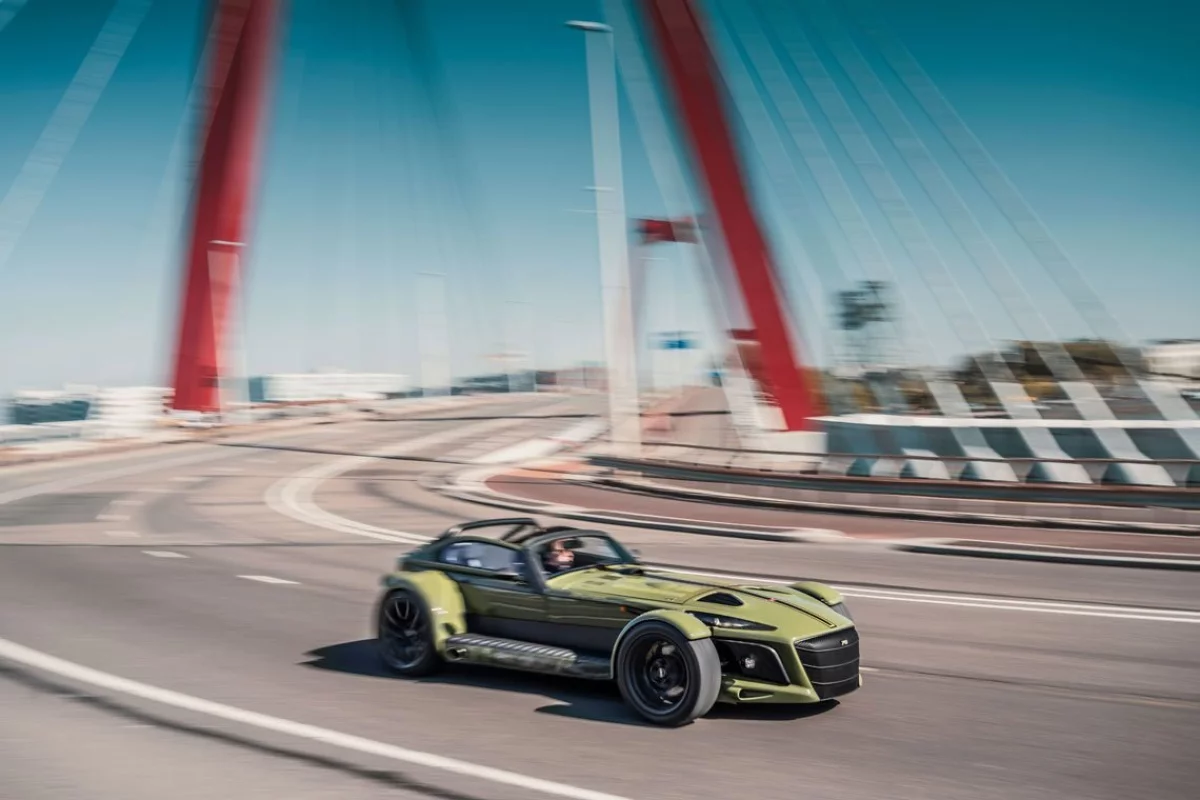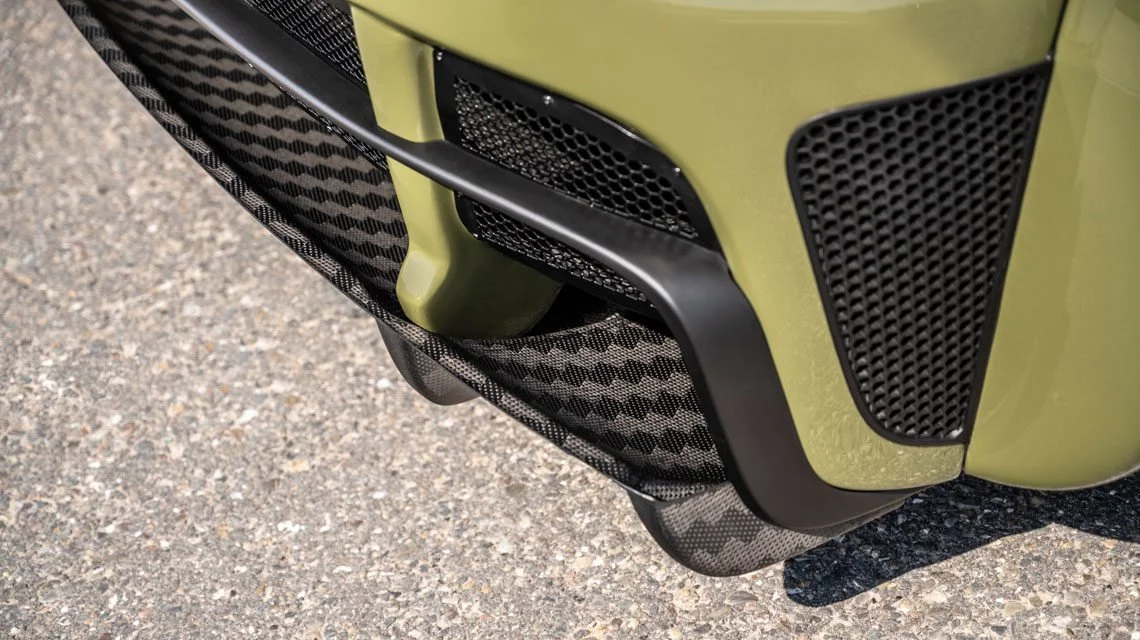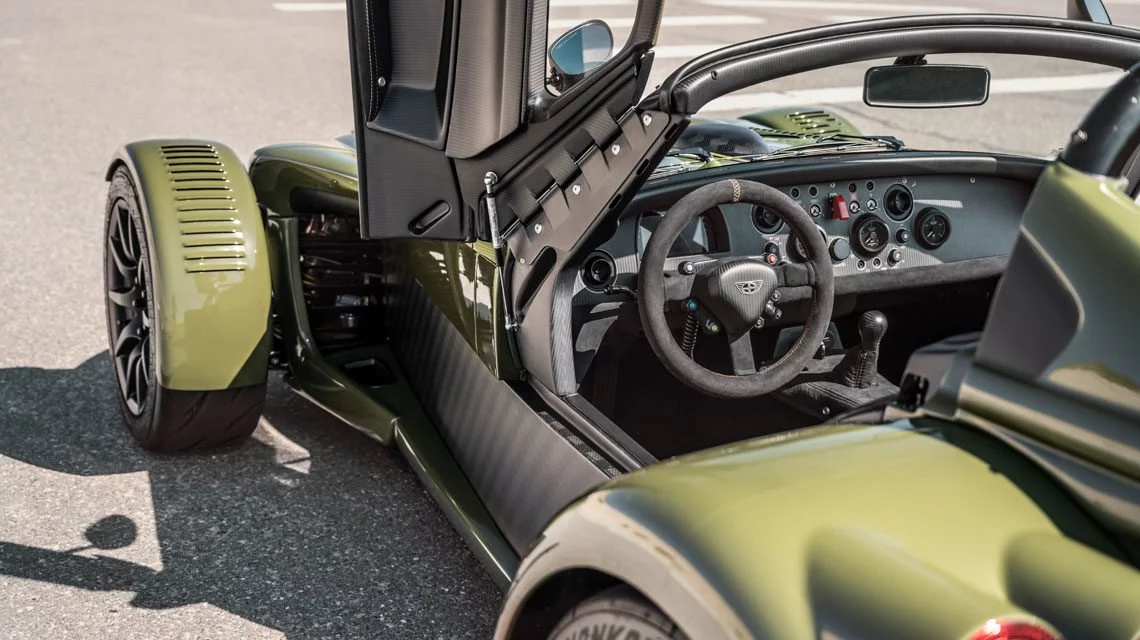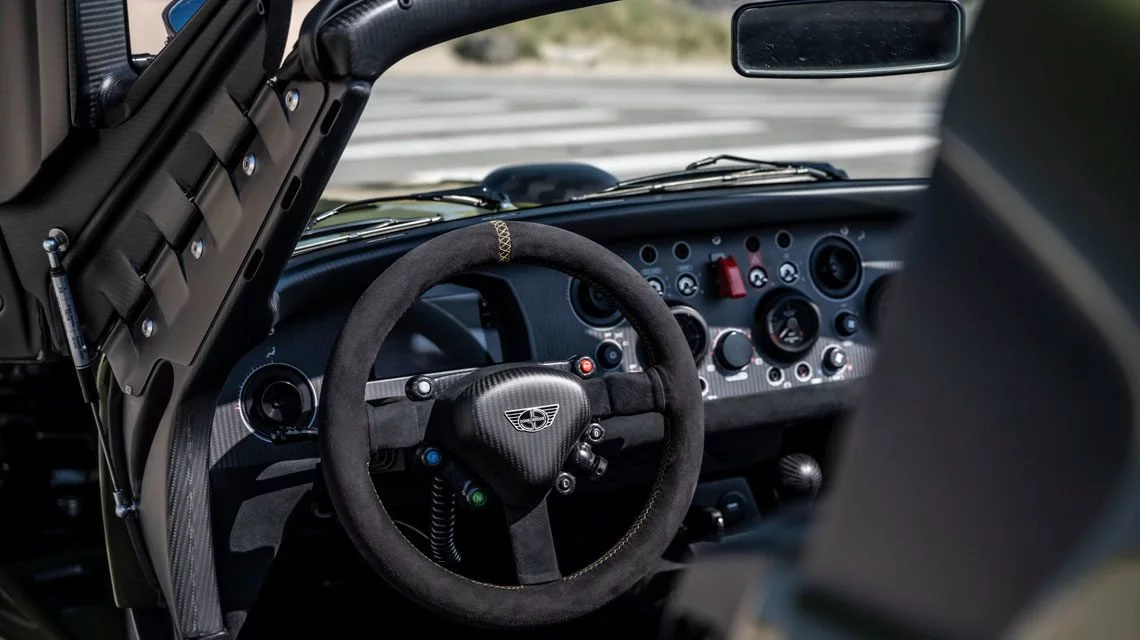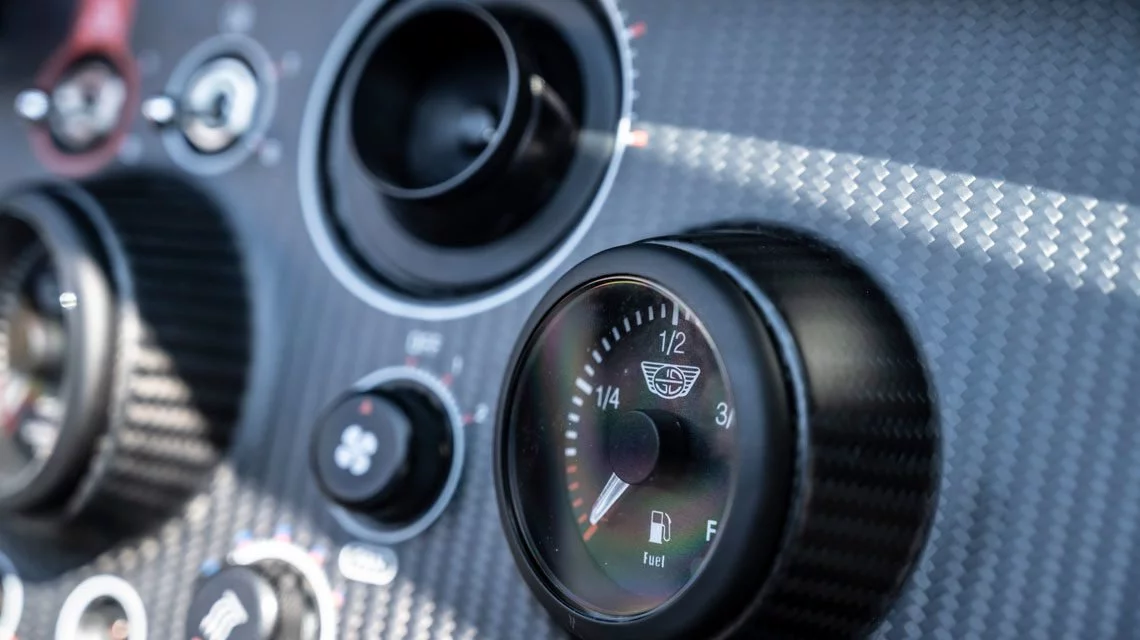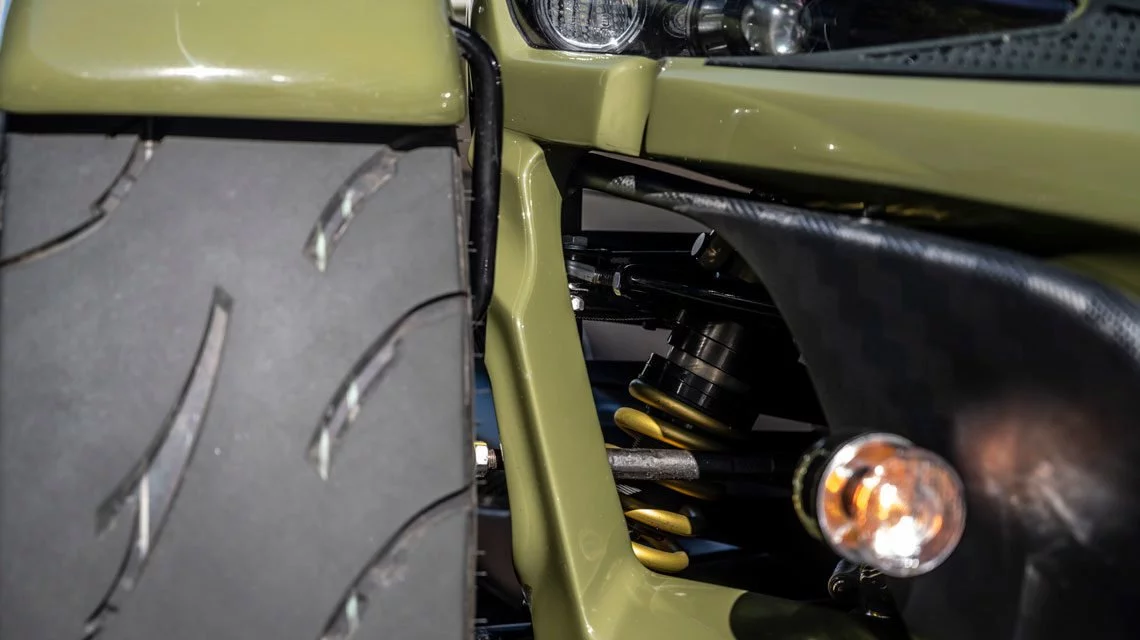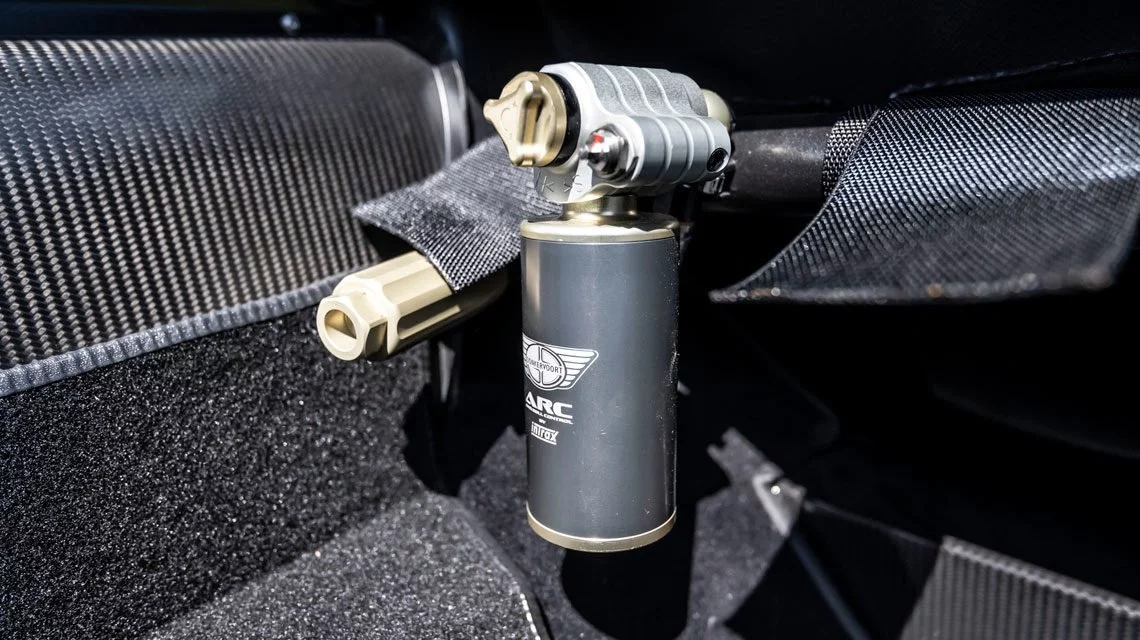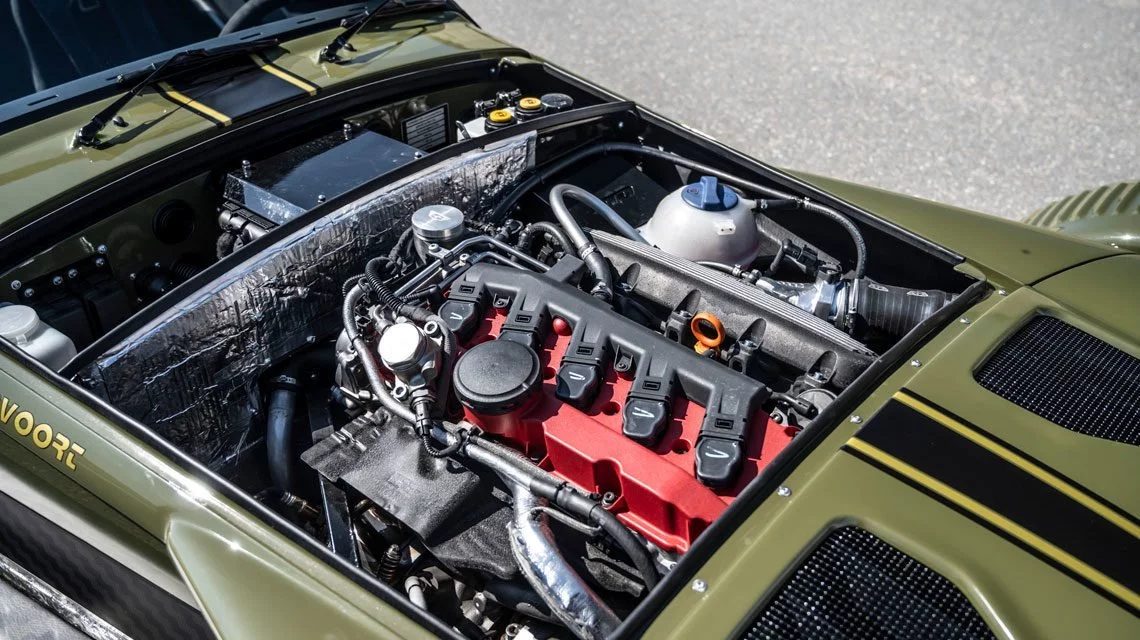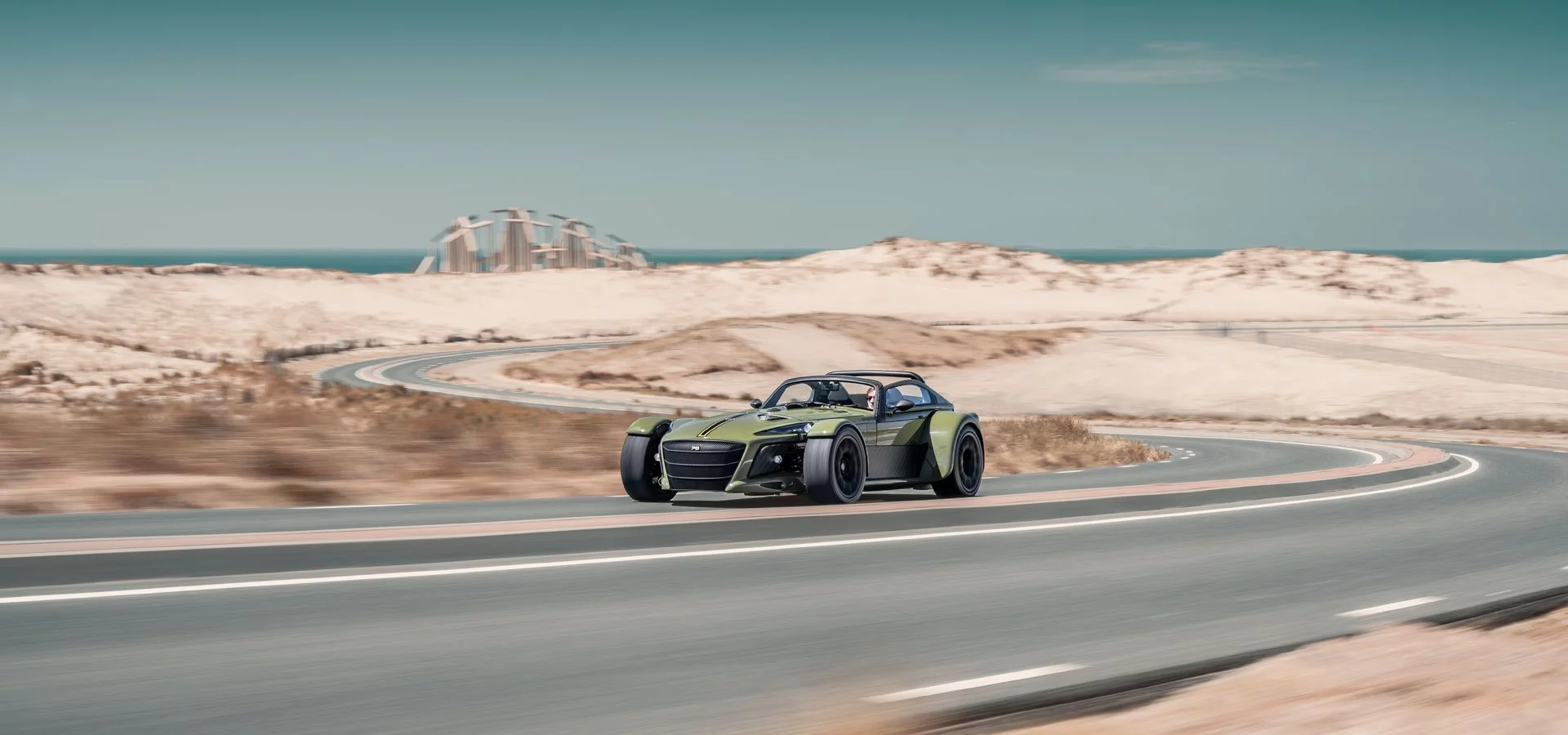That's 2 g, as in you can wrench the steering wheel sideways at speed and the new D8 GTO JD70 will grip the road so hard it'll smoosh your face against the side windows with twice the force of gravity. It's also the most powerful Donker ever made.
This Dutch company has been building super-lightweight, road-registrable track destroyers since the late 1970s. The D8 series has been around since 1992, and proved itself the baddest street car on the planet in 2004 when it demolished the Nurburgring Nordschliefe lap record by a very comprehensive 15 seconds, putting in a 7:14-second lap that's still nothing to sneeze at.
The new JD70 version squeezes 415 horsepower out of its 2.5-liter, five-cylinder Audi engine, which is a healthy amount of power for a regular family SUV, but an avalanche of thrust when stuffed into a 680-kg (1,500-lb), carbon-bodied shoebox like this. It'll hit 100 km/h (62 mph) from a standing start in 2.7 seconds, or 200 km/h (124 mph) in 7.7 seconds, peaking at a maximum of 1.2 g of rear-wheel-drive acceleration on the way to a limited top speed of 280 km/h (174 mph).

Top speed, of course, is not the point. Out-cornering all other street cars by a significant margin is the point. To put the JD70's 2 g of lateral acceleration in context, you might want to take a look at this list of the top 100 "Grip Kings" around a skidpad. The Porsche 911 GT3 RS is on top, measuring at 1.24 g.
So 2 g is a lot. We're not talking a lot in terms of race cars; F1 car drivers are beefing up their neck muscles to deal with loads up to 6.5 g these days. But for a road car it's absolutely savage. Donkervoort achieves this level of grip using ultra-lightweight power steering, upgraded double-wishbone coil-spring suspension with Intrax adjustable damping, and Nankang AR-1 tires: 245/40s on the rear and 235/45s hanging out semi-open at the front.
Downforce plays a key role too, despite the lack of a fat back wing, which Donkervoort says would cause unacceptable drag at high speed. By moving to a side-mounted exhaust, the team has freed up some space at the back of the car, and it's used that space to beef up the carbon underbody diffusers for an extra 80 kg (176 lb) of downforce at speed. Then, there's new carbon louvres behind the front wheels, which squeeze an extra 50 kg (110 lb) of downforce out of the front end as well.
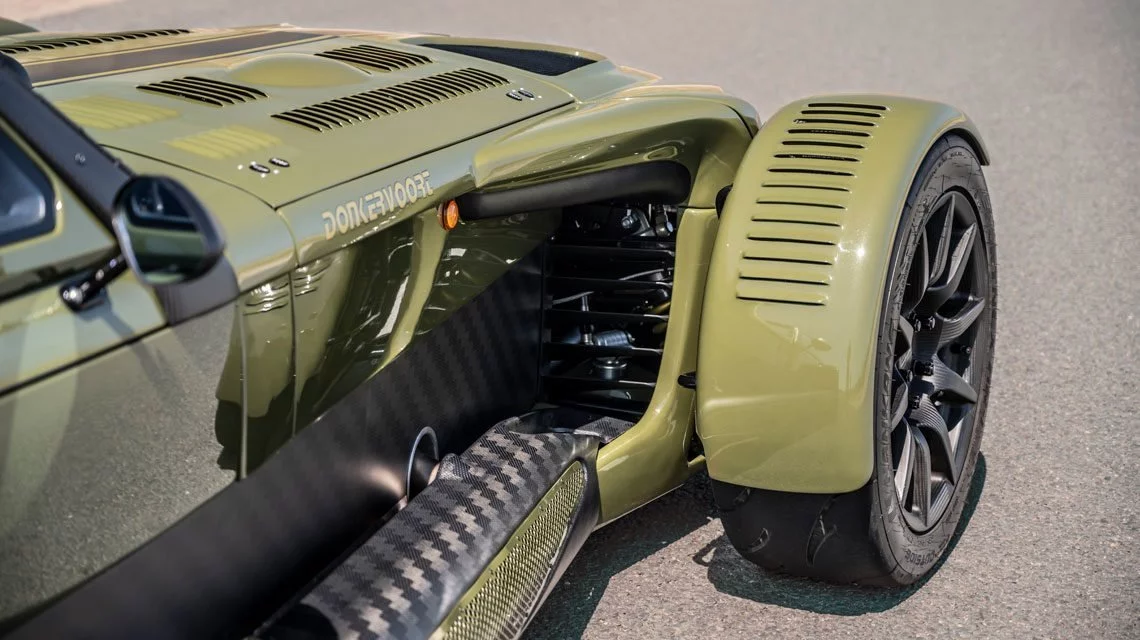
Despite the JD70's light weight, the chassis isn't a carbon monocoque. Indeed, it uses a few steel tubes, as well as carbon and aluminum. Brakes are Tarox six-piston jobs on wavy discs, and there's traction control and optional Bosch race ABS as well as a Tremec 5-speed manual gearbox with rev-matching on the downshifts.
Access to this kind of cornering madness is not cheap. At a base price of €198,000 (US$223,000), you're paying more than four times the retail on an Ariel Atom 4 and getting well up past the kind of toy budget most of us could get past the accountant. Still, you can pay a ton more for supercars that this thing would happily leave behind in the tight stuff, and with the horsepower war getting into frankly silly numbers in recent years we could definitely get behind cornering g-loads as a new thing for car companies to fight each other over.
Check out a video below, in which the JD70 does very little in the way of high-g cornering.
Source: Donkervoort
